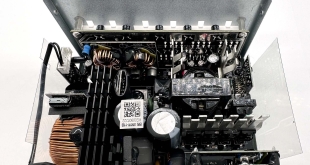To test the Alloy Elite, I used it for a couple of weeks to get a really good feel for the board. During this time, I used it to play games, write reviews and for general desktop use as well.
I'll start this section off with a look at the keyboard's backlighting.
The Elite ships software-free, so the backlight is controlled direct from the board itself. There are 3 levels of brightness, while there are also 6 different lighting effects. The effects are as follows: static, breathing, reactive, reactive ripple, ripple, and WASD-only. It is very easy to choose between the different settings as there is a dedicated button for doing just that. The red-only LED strip above the F-keys also looks great and adds something extra, even if it is not a very practical inclusion.
However, I do feel that at this price-point, and for a keyboard of this calibre, the lighting really should be RGB. I can appreciate that there is an Elite RGB model in the works and that should be ready for a 2018 release, but I do just find it a bit puzzling that HyperX has launched a red-only model first. In any case, for £120 you would expect RGB lighting and that is sadly lacking.
Moving on to the build quality of the board, I am happy to say that this aspect of the Alloy Elite remains class-leading. The steel top-plate obviously helps matters a great deal, and there is minimal flex to the keyboard. I have previously praised Cooler Master keyboards for being some of the sturdiest on the market, but I do think the Elite just pips them to the post here. This is a definitely a board that could withstand some damage.
Now, as for using the keyboard itself, I had a very pleasant experience with the Alloy Elite. The extra dedicated buttons are very handy – having media keys set as secondary functions is a pet peeve of mine – so top marks there. The wrist rest is also comfortable and I found it was sloped at just the right angle for me, so that addition alone goes a long way to justifying the extra £20 in price.
The switches are an interesting area to discuss given that the Elite will only be available with MX Red switches (in the UK, at least), whereas the Alloy FPS launched with only MX Blue switches. My guess would be that the initial availability of just Blue switches for the Alloy FPS proved divisive, so HyperX decided to play it safe with Red switches which are generally considered the ‘best' for gaming.
That is because they have a relatively light 45g actuation force requirement, and a 2mm actuation distance. The action is also linear and non-clicky. However, while I do like to game with MX Reds, I personally miss the tactile feedback of MX Brown/Blues while typing, so it is a shame that there isn't a choice of switches for the Elite.
Other than that, though, the board performed as expected and I had no issues with it.
 KitGuru KitGuru.net – Tech News | Hardware News | Hardware Reviews | IOS | Mobile | Gaming | Graphics Cards
KitGuru KitGuru.net – Tech News | Hardware News | Hardware Reviews | IOS | Mobile | Gaming | Graphics Cards



